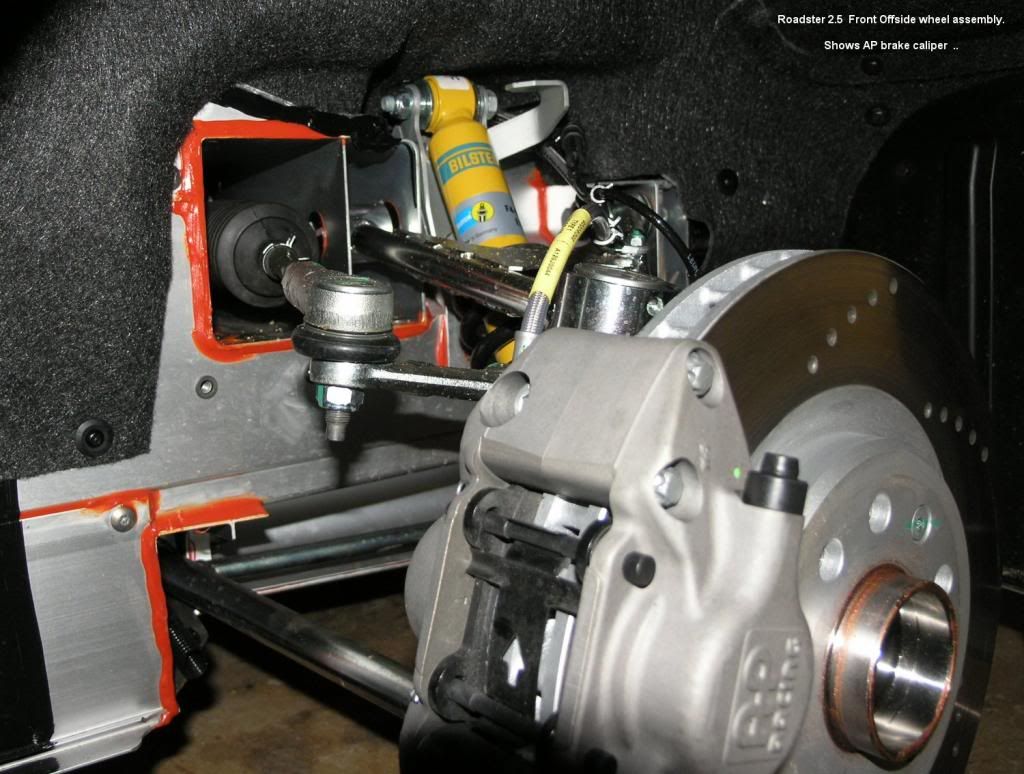Jaff
Active Member
Nice job Marco!...Psst, please let us know when you fit the liquid cooling units for the motor and PEM and get the 0-60 times down to 2.5 seconds...many of us will be beating the proverbial "path to your door..." :wink::smile:
You can install our site as a web app on your iOS device by utilizing the Add to Home Screen feature in Safari. Please see this thread for more details on this.
Note: This feature may not be available in some browsers.
Awesome Job Marco! While your at it, change out the stock brakes for CarboTechs and also remove the old brake fluid, clear out the lines, and put in new clean stuff. I'm sure that brake fluid is long over due and has a good bit of moisture in it. I also removed those silly sun visors, you get more visibility without them.
I called CarboTech in the UK, today. Their brakes have too much performance to be street legal in Germany
Well, I think my front brakes might have been upgraded already? They have "AP Racing" written on them. Is this the stock front brake in the 1.5 Roadster?

Nice job Marco!...Psst, please let us know when you fit the liquid cooling units for the motor and PEM and get the 0-60 times down to 2.5 seconds...many of us will be beating the proverbial "path to your door..."
I called CarboTech in the UK, today. Their brakes have too much performance to be street legal in Germany
Well, I think my front brakes might have been upgraded already? They have "AP Racing" written on them. Is this the stock front brake in the 1.5 Roadster?
Really, its illegal to have good brakes in the UK? That's the craziest thing I've ever heard in my life. The CarboTech BobCat 1521 were designed for the street, I'm running the AX6's which are the track pad. Roadster owners who've switch to either are very pleased and its a night/day comparison over the stock Brembos that have a terrible time stopping the Roadster. They're also dusty as a muck and that also contributes in their stopping power even worse. So how would they know that you swapped them out, does the UK have vehicle inspections every year? If its a matter of just ordering them, order them in the US and have them shipped out. Or you could have one of your forum friends send a set out to you.
As for the brake calipers and the AP Racing branding, my 1.5 is equipped with the same ones.
Marco, that's great that you got your PEM working again. IGBT's have progressed along way since that Roadster was designed. From a few minutes of looking, you can get a single 1200V, 300A IGBT for less than $150. If you want a real beast of an IGBT, you can you get a 1200V, 1000A IGBT for $650 (http://theelectrostore.com/shopsite_sc/store/html/cm1000ha-24h-powerex-new.html). To put it in perspective, 1200V * 1000A is 1608.6hp.
Large hybrid modules also can't match the speed of many-parallel IGBT arrays, which is probably why Tesla used this setup. Looks like the drive waveforms are sent into two groups individually, which makes sense, to reduce the gate capacitance the driver ICs have to charge/discharge.
In quantity, Tesla was probably buying each IGBT for less than $5 a pop, which is far cheaper than a single IGBT half bridge module ($400 ~ $1000+ per unit) even if you need 28 IGBTs...
Yes, this is really a great thing, because it allows much easier DIY repair of electronic components.Yep, indeed - part of Tesla's low cost technology.
Also, it looks like every part on that board is commodity, off the shelf. Compare to the Prius, for example, which has a large number of custom Toyota chips.
The main problem with liquid cooling is that the heatsinks of the power stages for the three phases have to stay electrically isolated. Another idea would be CO2 cooling...
Large hybrid modules also can't match the speed of many-parallel IGBT arrays, which is probably why Tesla used this setup. Looks like the drive waveforms are sent into two groups individually, which makes sense, to reduce the gate capacitance the driver ICs have to charge/discharge.
Right, for IGBTs and MOSFETs it's very important how you drive them. It can actually take quite a bit of oomph to drive them fast and hard enough; otherwise they partially conduct and dissipate a lot more power. They really like to be all the way on, or all the way off. Anything in the middle just generates lots of heat.
What's the typical solution to drive lots of stacked IGBTs? Opamp or ??? Based on the article in Tesla's blog (which has a picture of a 2.x PEM) they are switching at a frequency of 32 kHz. That's enough to generate a lot of heat.


